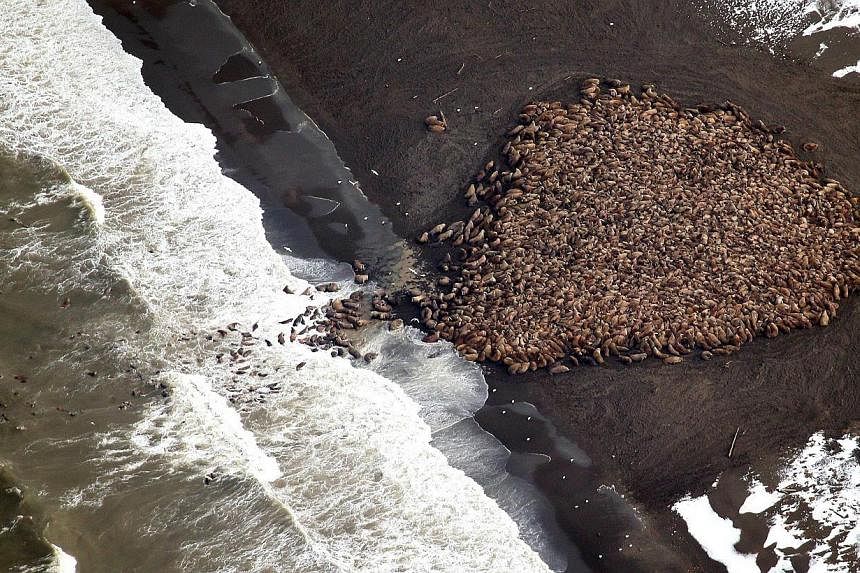LOS ANGELES (AFP) - United States (US) wildlife authorities have ordered planes to avoid flying too close to a vast herd of exhausted walruses beached on a remote Alaskan beach.
The Fish and Wildlife Service (FWS) has told pilots to avoid flying below 610 metres to protect the animals, which could stampede if alarmed by engine noise.
Baby seals would notably be at threat in a stampede in the huge herd, which experts say have hauled themselves out onto the shore due to melting ice caused by climate change.
"If disturbed, walruses may stampede into the water. Trampling deaths associated with disturbance events are one of the largest known causes of mortality affecting the Pacific walrus population," said the FWS.
"Walruses are particularly sensitive to changes in engine noise and are more likely to stampede when planes turn or fly low overhead," it added in a notice to pilots.
It noted that flying manoeuvre which result in "disturbing, harassing, herding, hazing, or driving of walruses" are against the Marine Mammals Protection Act and Federal Airborne Hunting Act.
Initially there had been only 1,500 of the tusked pinnipeds on one beach, but in recent days that number exploded.
"Our best estimate is almost a 24-fold increase," said Ms Megan Ferguson of the Aerial Surveys of Arctic Marine Mammals.
The walruses "are hauling out on land in a spectacle that has become all too common in six of the last eight years as a consequence of climate-induced warming," the US Geological Survey (USGS) said in a statement.
Beaching on land makes young walruses more susceptible to death by trampling, the agency said, adding that walruses would normally haul out on ice nearer to rich feeding grounds.
The USGS said summer sea ice is retreating far north of the continental shelf waters of the Chukchi Sea, which is in US and Russian waters, "a condition that did not occur a decade ago.
"To keep up with their normal resting periods between feeding bouts to the seafloor, walruses have simply hauled out onto shore", it added.
Experts who have been working in the area - monitoring the walruses from the air among other activities - say they have been careful not to disturb the creatures.
"We make sure that when we do surveys we are far enough from the shore," said FWS walrus researcher Joel Garlich.
The FWS asked pilots to remain 610 metres above and half a mile away from any shore-based walrus groups. Helicopters were asked to remain 914 metres above and 1.6km away.
"If cloud conditions necessitate flying lower than these recommended altitudes, please pass inland to avoid flushing walruses from the beach," it added.
The FWS added that it had asked the Federal Aviation Administration (FAA) to notify pilots to avoid disturbing walruses.
Ms Ferguson noted that more brown bears than previously estimated were also spotted on the same stretch of coastline, while gray whales that had swum in the area up to the 1990s have disappeared.

